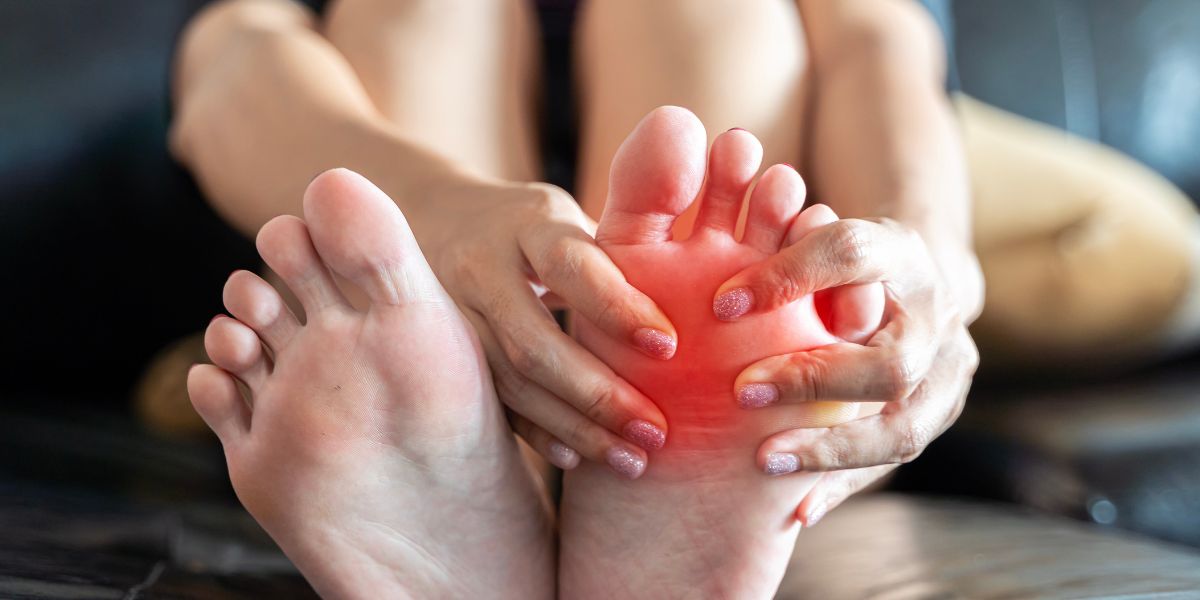Portrait of Donne Maula Supporting Yura Yunita at the Concert, Referred to as a Supportive Partner
Donne Maula fully supports Yura Yunita at the Bingah concert, showcasing a relationship that is full of understanding and inspiration.

Kapanlagi.com - Have you ever felt pain in your calves after exercising or sitting in an uncomfortable position? You might think it's just the effect of excessive physical activity. But be careful! Persistent pain could be an early sign of gout.
Gout is often known as the main enemy of the joints, especially in the big toe. But did you know? This condition can also affect the calves! Gout occurs when uric acid crystals accumulate in the joints, causing inflammation and unbearable pain. Although rare, gout attacks in the calves can mimic the symptoms of cramps or muscle injuries.
Therefore, it is important to recognize the signs of gout in the calves so you can take appropriate action immediately. If left untreated, these attacks can disrupt your mobility and daily activities.
In this article, we will discuss in more depth the characteristics, causes, and ways to address gout in the calves. This way, you can be more vigilant and maintain your body's health!
Gout, a condition that can disrupt your comfort, occurs when the levels of uric acid in the blood soar high, triggering the formation of painful crystals in the joints. Although it usually resides in the joints of the feet, this attack can spread to the calves, especially due to the accumulation of crystals in the tibiofibular joint. Not only that, pain in the knee or ankle can also radiate to the calves, adding to the discomfort.
Various factors such as a diet rich in purines from offal, seafood, and red meat, combined with alcohol consumption, obesity, and genetic factors, can increase the risk of developing gout. Certain health conditions, such as kidney disorders, can also worsen the accumulation of uric acid in the body, making attention to lifestyle very important to prevent this issue.
Gout symptoms in the calves are often misinterpreted as muscle cramps or ordinary fatigue. Here are some distinctive characteristics to pay attention to:
Gout attacks usually last from a few hours to 10 days. If you experience these symptoms repeatedly, it is advisable to see a doctor for an accurate diagnosis.
Not all calf pain is caused by gout. Several other conditions that can trigger similar pain include:
The main difference is that pain from gout often occurs suddenly, worsens within a few hours, and can last for several days. Meanwhile, ordinary muscle pain tends to improve with stretching or rest.
If you experience symptoms of gout in the calf, there are several steps you can take to alleviate it, both naturally and with medication:
If gout attacks continue to recur, the doctor may prescribe medication to lower uric acid levels in the blood to prevent the recurrence of symptoms.
If pain in the calf persists for a long time or occurs repeatedly, it is advisable to consult a doctor immediately. Some signs indicating the need for medical consultation include:
Medical examinations such as blood tests and joint imaging can help determine whether calf pain is indeed caused by gout or another condition.
Gout cannot be completely cured, but its symptoms can be managed with a healthy lifestyle and appropriate medication.
Avoiding foods high in purines, maintaining an ideal weight, exercising regularly, and drinking plenty of water can help prevent gout attacks.
Yes, gout attacks can recur if the levels of uric acid in the body are not well controlled.
(kpl/srr)
Cobain For You Page (FYP) Yang kamu suka ada di sini,
lihat isinya
Donne Maula fully supports Yura Yunita at the Bingah concert, showcasing a relationship that is full of understanding and inspiration.
Overcome the fishy smell and enjoy tender beef lungs with the right boiling technique! Discover the easy steps here and serve a delicious dish that will whet your appetite.
IKN is welcoming visitors again after maintenance, ready to amaze the public starting February 5, 2025! Don't miss the opportunity to explore the beauty and innovation at IKN by registering through the IKNow app. Register yourself soon and prepare for an exciting adventure!
Donna Harun is always happy to be involved by Herfiza in taking care of the grandchildren. Here are their warm moments together.
The registration for Polri Non-Commissioned Officer 2025 is now officially open! Prepare yourself to embark on a journey towards a brilliant career in the police force by understanding the requirements and selection stages. Don’t miss this golden opportunity, visit the official link to register and achieve your dream of becoming part of Polri!
Tropical cyclones are low-pressure storms that form over warm seas. Learn about their causes, impacts, and mitigation methods.
Isa Bajaj shares romantic portraits with his wife, Rahayu Mutiara.
The Pramoedya Ananta Toer Century Festival is held in Blora, celebrating the literary legacy of the legendary writer.
Find everything you need to know about how to manage SKCK with this practical guide! From requirements and costs to the steps for processing both offline and online, we present it clearly and concisely. Get ready to obtain your SKCK easily and quickly!
This is the best work of Pramoedya Ananta Toer that depicts history, struggle, and social criticism in Indonesia.
Isa Bajaj left the entertainment world to care for his mother. This major decision was influenced by his wife's request.
Carmen, a K-Pop idol from Indonesia, debuts at SM Entertainment with Hearts2Hearts! Here is her journey and charm.